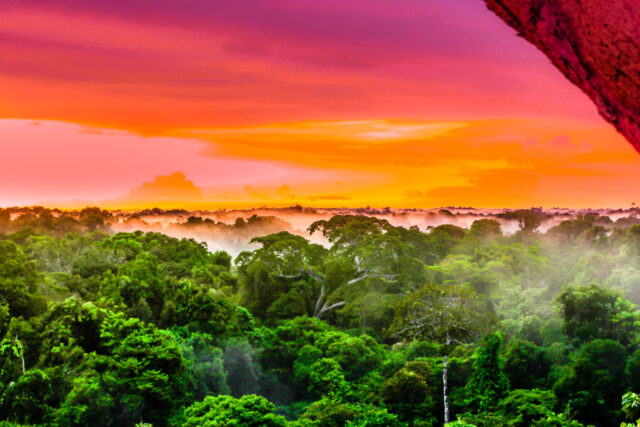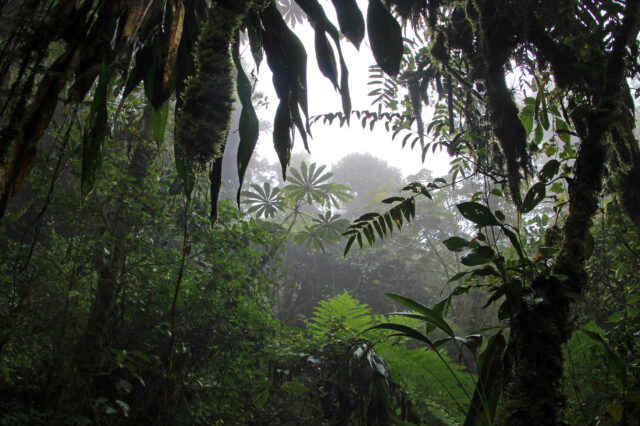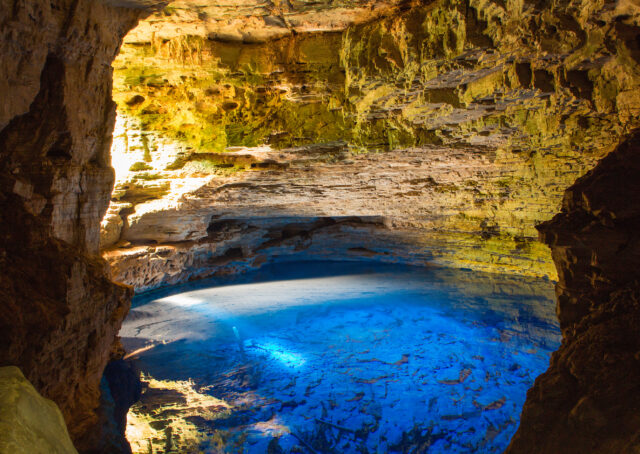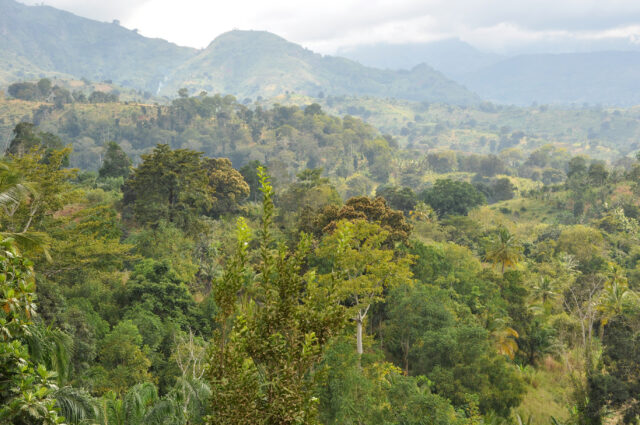10 of the Most Biodiverse Places on Earth
ABOUT
At Our Whole Village, we plan meaningful vacations for families who want to create lifelong memories and show their kids the world in a more conscious and intentional manner.
WORK WITH US
We help families take meaningful vacations so that they can escape everyday life, show their kids the world and make lifelong memories - with care, confidence and peace of mind.
THE BEST FAMILY VACATIONS BY AGE
Your (free) guide to the top travel destinations for families with babies, teens and everyone in between.
DOWNLOAD NOW
ABOUT US
Alaska, Amazon, Brazil, California, Central America, Chapada Diamantina, Colombia, Costa Rica, Ecuador, Mexico, North America, Out & About, Peru, South America, Tanzania, USA
March 14, 2023
Few experiences prove more exhilarating to nature junkies than visiting one of the planet’s most biodiverse destinations. British scientist Norman Myers first coined the term “biodiversity” in 1998, referring to areas with abundant local species in need of priority conservation status. In other words, biodiverse hotspots are both rich in wildlife and endangered.
Since 2000, the original listing of 25 biodiverse places has ramped up to 36 or 2.5 percent of the planet’s surface. Some are more difficult to access than others, especially when traveling with kids. Nevertheless, they remain ideal destinations for experiencing nature at its most pristine while teaching children essential environmental lessons. But you must travel responsibly to ensure a beneficial impact on these regions.
Here are ten of the most biodiverse places on Earth with family-friendly access.
1. The Brazilian Amazon

© Ulf Huebner | Dreamstime
One-third of all species on the planet live in the Amazon Rainforest. It covers a massive 2.6 million square miles, or 40 percent of South America. More than half of the forest sits in Brazil, making it the ideal place for a biodiverse family vacation. So, what’s the best way to see the Brazilian Amazon with kids? An Amazon River cruise where your family will explore primary forest, fish for piranhas, swim with river dolphins, spot caimans at night, and much more.
2. Ecuador’s Cloud Forests
Ecuador is slightly smaller than the American state of Nevada, yet it contains a magnificent and mind-boggling array of ecosystems. They include the Pacific Coast, the Sierra, and the Amazon. And on both sides of the Andes, you’ll find rich biodiversity in the nation’s Cloud Forests, including butterflies, orchids, birds, and mammals. Besides exploring the diverse flora and fauna of Ecuador’s Cloud Forests, enjoy opportunities for adrenaline-spiking outdoor adventures like ziplining the canopy and tubing regional waterways. Here’s everything you need to know about planning the perfect family trip to Ecuador.
3. Costa Rica’s Monteverde Cloud Forest

© Martin Schneiter | Dreamstime
Costa Rica’s Monteverde Cloud Forest provides a refuge for more than 425 bird species, 120 mammal species, 60 amphibian species, and 101 reptile species. It contains thousands of insects and 3,200 plant species, including more than 400 orchids. Approximately 50 percent of Costa Rica’s total biodiversity exists within this park. That’s 2.5 percent of the globe’s total! If you’re looking for a kid-friendly way to experience Costa Rica’s wild spots, start by checking out our family-friendly itinerary.
4. The Alaskan Backcountry
While rainforests are among the first areas that come to mind when you think of biodiversity, have you considered a visit to the Alaskan backcountry? It contains the largest areas of temperate rainforest in the world. Among our favorite highlights? Visit Southeast Alaska’s Chilkoot Inlet, where your family will marvel at the old-growth forests. Check out our post on Alaska for families for more tips on crafting the ideal getaway to America’s last frontier.
5. Brazil’s Chapada Diamantina

© Alessandro Pires De Souza | Dreamstime
Brazil’s Cerrado boasts a reputation for being one of the planet’s oldest and most diverse tropical ecosystems. Access the habitats of the Cerrado on a visit to Chapada Diamantina National Park, where you’ll fall in love with secluded waterfalls, rugged tabletop mountains, and expansive valleys. The Cerrado has not received the same environmental protection as other Brazilian biomes like the Amazon Rainforest. But properly invested tourist dollars help preserve this incredible location. Learn more about Chapada Diamantina National Park’s breathtaking waterfalls and the best family-friendly itinerary for your visit.
6. Mexico’s Sian Ka’an Biosphere Reserve
The Maya, who once inhabited Mexico’s Sian Ka’an Biosphere Reserve, gave it a fitting name, “Origin of the Sky.” The park sits on the Yucatán Peninsula’s east coast and contains mangroves, marshes, and tropical forests. It also boasts a large section of ocean housing a barrier reef filled with colorful life. More than 300 species of birds flock to the area, along with large numbers of mammals, reptiles, and amphibians. Of course, Sian Ka’an is one of many ways to see Mexico’s most remarkable landscapes and oceanscapes. Check out our Mexico Family Vacation in Baja for more ideas.
7. Peru’s Manú National Park

© Alexey Stiop | Dreamstime
Exploring the Peruvian Amazon means heading to Manú National Park, where you and your family will see nature at its most pristine. The park contains 221 mammal species, hundreds of bird species, and a wide range of ecosystems. Manú is also famous for the indigenous tribes that continue to follow traditional lifeways living in seclusion. So many incredible ways to experience this region exist, whether you’re admiring a colorful sunset or scoping out caimans on a boat tour. Our Peru Family Vacation includes an Amazon extension that lets your family travel into the heart of this incredible wilderness.
8. California’s Floristic Province
The Golden State is known for incredible sights and experiences. But one of our favorites is a visit to the California Floristic Province, where you can explore an old-growth forest that extends from Oregon’s Klamath River into Northern California. This region contains nearly 3,500 plant species, with more than 60 percent native and some of the tallest trees in the world. We’re talking upwards of 300 feet high! Besides incredible plants, the region provides vital breeding grounds for California condors, a critically endangered species. Couple this with our California Road Trip Itinerary, and you’ve got an unforgettable family vacation.
9. Tanzania’s Coastal Forests

© Olemartin | Dreamstime
When you think about Africa, what comes to mind? Perhaps the endless plains of the Serengeti where lions, hyenas, elephants, and wildebeests rove? If so, you’re not alone. After all, visiting these landscapes drives the voracious African safari industry. But there’s more to the continent than the golden plains of East Africa. In Tanzania and Kenya, discover fragmented coastal forests housing fantastic biodiversity. There, you’ll find residents like the red colobus monkey, an endangered primate, and more than 4,000 plant species.
10. Colombia’s Caribbean Mangrove Forests
On Colombia’s Caribbean coast, you’ll find Cispatá Bay, which contains 270,000 acres of mangrove trees. The forests line the Sinú River, providing essential habitat for needle-nose crocodiles. Mangrove forests can hold up to ten times more carbon than other forests, which makes protecting this region vital to the planet’s health. Responsible, sustainable tourism assists mangrove conservation, so working with the right travel advisors is essential.
The Most Biodiverse Places on Earth
As you can see, there’s no end to intriguing choices when it comes to planning a family vacation around the most biodiverse places on Earth. Whether you’re drawn to Ecuador’s Cloud Forests, the Alaskan Backcountry, or Brazil’s Amazon, we can help you plan the perfect itinerary based on your family members’ ages and interests.
Are you ready to find out more about how to visit the planet’s most biodiverse places? We’ve got you covered. We have the travel expertise, family travel know-how, and local connections to facilitate an unforgettable family getaway.
Ready to get started? Let’s chat!
OUR SERVICES
HOME
COPYRIGHT © OUR WHOLE VILLAGE 2021
DESIGN BY GIRLBOSS DESIGNER | CUSTOMIZED BY ALEX COLLIER DESIGN
about
TRAVEL SERVICES
DESTINATIONS
BLOG
PLAN A TRIP
FREE TRAVEL GUIDE
TERMS AND CONDITIONS
hello@ourwholevillage.com
+1 305 432 2612
